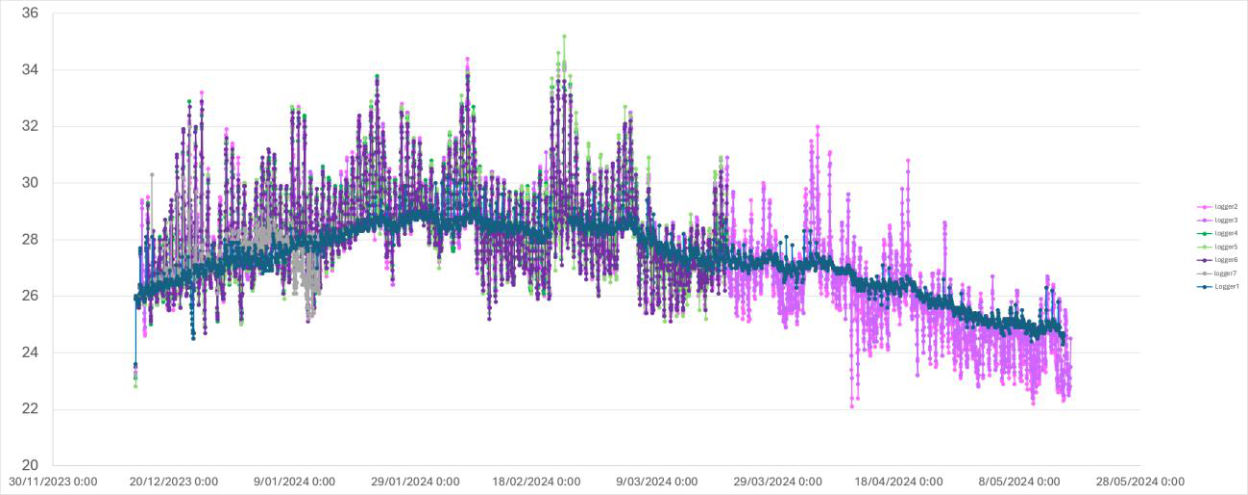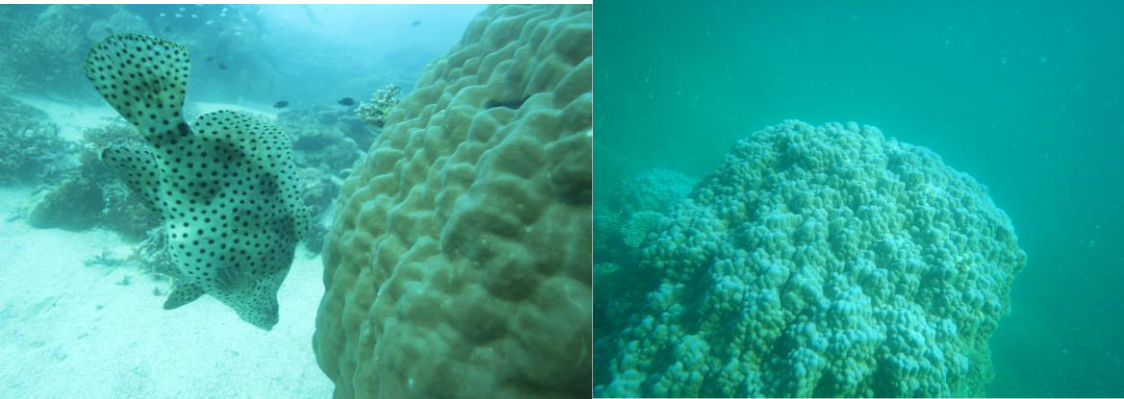Back in March close to 100% of corals surveyed showed signs of thermal stress. This included colour changes especially if the zooxanthellae were excluded from the coral due to heat stress. From this state the corals are essentially starving as they have little means to generate sugar and are essentially living off reserves. If the conditions improve they can regain their algae from the sea water and start the solar farm back up again but only if the conditions suit the algae. If the conditions continue to be too hot then they will run out of sugar (stored as crystals) and die. Then the skeletons will be exposed to filamentous algae to colonies and eventually the coral will fall apart.
So what happened? Well the temperatures were really hot and you can see this in the graph below. Each dot represents a reading by 7 temperature loggers placed around the reef. At some locations it went right up to 34 degrees which for these corals is way too hot. It was looking pretty disastrous but as you may recall in early march the wind kicked in and mixed all the waters up so the hot surface water was diluted with the cooler deeper waters. And the winds did not stop for several months. This meant the corals were able to recover in the majority of cases by the skin of their tentacles!

Figure 1. Graph of 7 temperature loggers from late November 2023 to May 2024.
We have seen about 30% of corals have died and will be colonized by algae while the rest have recovered strongly. Some are still showing signs of bleaching but are likely to pull through. The message coming through loud and clear is that reefs that are well protected and healthy can survive a heat wave of this intensity as long as the duration is not extended. Where the future goes is hard to say and we need to be cognizant that corals do not like the cold winter temperatures either. We are closely monitoring the situation.

Figure 2 Heron Island Bommie: Pre-Bleaching (left) and bleached (right). This Porities bommie has
recovered.

